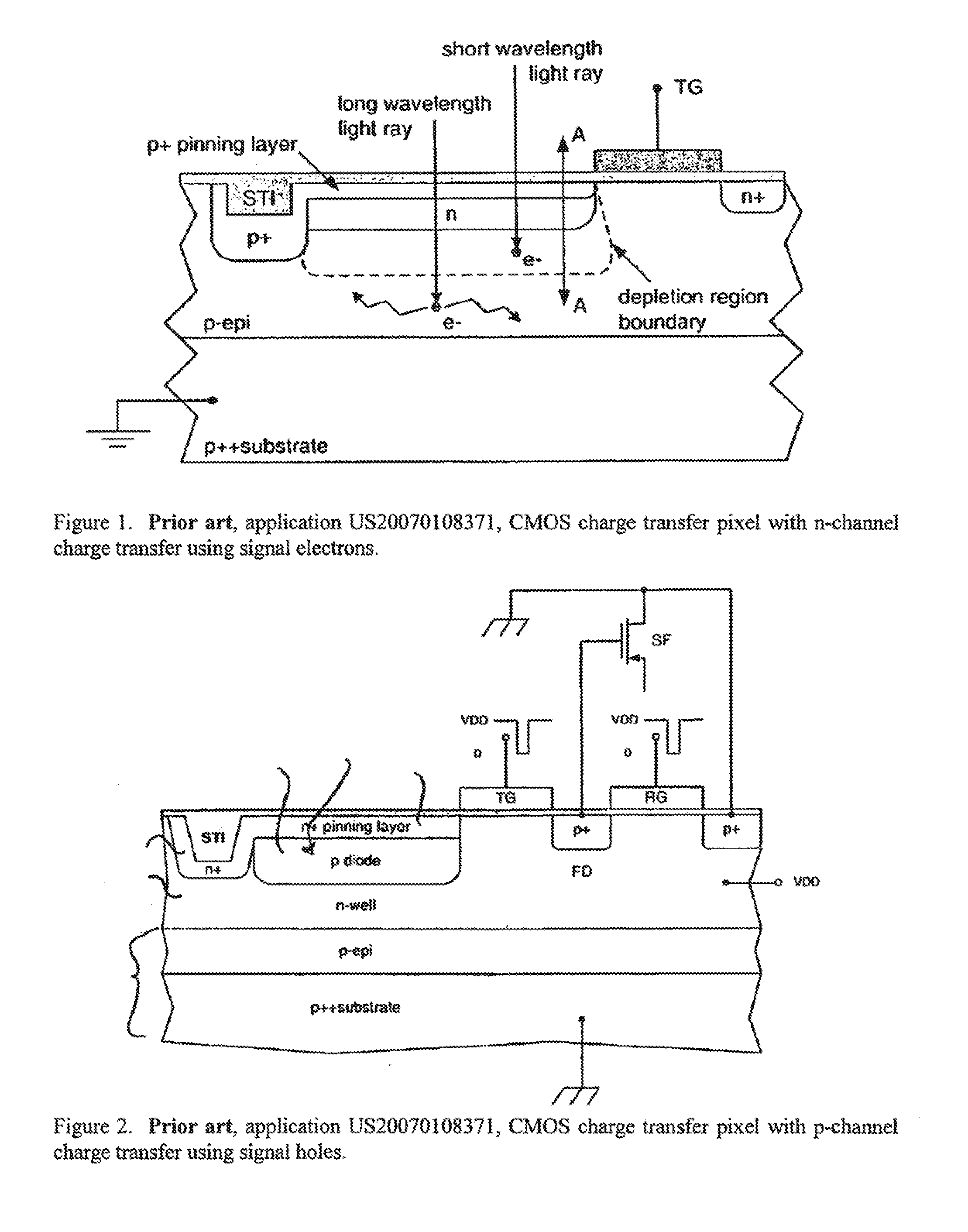Night vision CMOS imager with optical pixel cavity
a cmos imager and optical pixel technology, applied in the field of imaging devices, can solve the problems of intensifier tubes, high cost, large size and high cost, and achieve the effect of low cost, small size and low cost of cmos imaging devices
- Summary
- Abstract
- Description
- Claims
- Application Information
AI Technical Summary
Benefits of technology
Problems solved by technology
Method used
Image
Examples
Embodiment Construction
[0025]Certain embodiments of the present invention pertain to pixel designs. A pixel comprising a small volume of detecting silicon contained in an optical cavity that provides multiple light passes through the detecting silicon over a wide range of wavelengths. The optical cavity may be formed by flat or curved minors to reduce pixel-to-pixel cross-talk and improve QE. The optical cavity is effectively non-resonant with respect to photon absorption because the thickness of the silicon is large compared to the wavelength of light being detected.
[0026]An aperture is provided in one of the minors for light to enter the cavity. The shape of the mirrors may be curved to minimize loss of light reflected back to the aperture and reduce cross talk between pixels. Each pixel may have an associated microlens capable of focusing light falling on the lens area to a small spot which fits within the cavity aperture to improve QE. In an embodiment, the diameter of the aperture is significantly sm...
PUM
 Login to View More
Login to View More Abstract
Description
Claims
Application Information
 Login to View More
Login to View More - R&D Engineer
- R&D Manager
- IP Professional
- Industry Leading Data Capabilities
- Powerful AI technology
- Patent DNA Extraction
Browse by: Latest US Patents, China's latest patents, Technical Efficacy Thesaurus, Application Domain, Technology Topic, Popular Technical Reports.
© 2024 PatSnap. All rights reserved.Legal|Privacy policy|Modern Slavery Act Transparency Statement|Sitemap|About US| Contact US: help@patsnap.com










